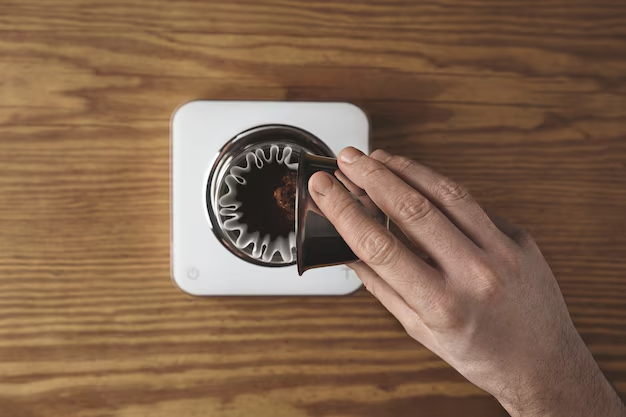Why Is My Refrigerator Leaking Water and How Can I Fix It?
Have you ever walked into your kitchen and been surprised to find a small pool of water forming under your refrigerator? This scenario is as common as it is frustrating. A leaking refrigerator can be caused by a variety of factors, and understanding these can prevent further issues while keeping your appliance in top condition. Let's dive into the most common causes of refrigerator leaks and what you can do to address them.
The Fundamental Reasons for Refrigerator Leaks
Identifying the source of a leak is the first step towards fixing the problem. Here are some of the most prevalent causes:
1. Clogged Defrost Drain
How It Works: The defrost drain is a small passage that allows melted water from the defrost cycle to exit from your refrigerator and typically drips into a pan beneath the appliance where it evaporates.
Common Issues: Over time, the defrost drain can become clogged with food debris or ice, causing water to back up and spill into your fridge or onto your floor.
Solution:
- Thaw and Clear: Manually remove any visible debris. Pour a mixture of hot water and baking soda down the drain to clear any blockages.
- Preventative Maintenance: Regularly inspect and clean the drain to avoid clogs before they start.
2. Damaged Water Supply Line
How It Works: Refrigerators with ice makers or water dispensers have a water line that supplies these features.
Common Issues: The water line can develop leaks due to wear and tear, causing water to pool underneath the refrigerator.
Solution:
- Inspect and Replace: Check for small cracks or perforations along the line. Replace if necessary for a permanent fix.
- Secure Connections: Make sure connections to the refrigerator are tight to prevent leaks.
3. Faulty Water Filter
How It Works: Water filters help purify the water before it is dispensed or frozen into ice cubes.
Common Issues: An incorrectly installed filter or one that is past its expiration can cause leaks.
Solution:
- Correct Installation: Ensure the filter is installed according to your refrigerator's manual instructions.
- Regular Replacement: Change the filter regularly to prevent wear and degradation.
4. Cracked Drain Pan
How It Works: The drain pan collects water from the defrost drain and needs to be regularly emptied.
Common Issues: If cracked, the pan will not hold water effectively, causing leaks.
Solution:
- Inspect and Replace Pan: Check for any cracks or damage. Replace the pan if necessary.
- Ensure Proper Fit: Make sure the pan sits correctly underneath the refrigerator.
5. Improper Leveling
How It Works: A refrigerator should be slightly tilted backward to allow the coolant and the defrost water flow efficiently.
Common Issues: If your refrigerator isn’t level, water can flow in directions it shouldn’t, causing leaks.
Solution:
- Adjust Alignment: Use a level to check the appliance. Adjust the feet as necessary to achieve the correct tilt.
- Re-check Regularly: Ensure levels remain consistent to prevent future issues.
Secondary Leaks and How to Manage Them
While primary causes are more common, there are secondary issues worth noting:
1. Humidity and Condensation
Regions with high humidity can cause excess moisture to accumulate on fridge surfaces.
- Short-Term Solution: Wipe down condensation as needed.
- Long-Term Solution: Consider a dehumidifier in the kitchen if moisture remains a persistent problem.
2. Door Gasket and Seal Issues
Seals that aren’t airtight can cause cold air to escape and excess moisture to build up.
- Inspect Seals: Door seals should be soft and create a firm seal when closed. Replace if cracked or deteriorated.
Quick Reference Summary: 📝
Here's a handy checklist to troubleshoot and resolve refrigerator leaks:
- Defrost Drain Cleaning: Regularly clear food and ice from the defrost drain.
- Water Line Inspection: Inspect for cracking or disconnects; replace or tighten as needed.
- Filter Maintenance: Ensure proper installation and replace on schedule.
- Drain Pan Check: Verify the integrity of your drain pan and replace if cracked.
- Level the Fridge: Adjust fridge feet to ensure a backward tilt for optimal drainage.
Practical Tips to Avoid Future Leaks
Preventative steps are key to ensuring your refrigerator functions optimally:
- Regular Maintenance: Conduct routine checks and cleanings to prolong the lifespan of components.
- Mind the Clutter: Avoid clogging vents with groceries—that prevents proper airflow.
- Keep It Cool: Set the fridge and freezer to appropriate temperatures to prevent excessive frost and condensation.
- DIY Readiness: Familiarize yourself with your refrigerator’s manual for best practices and quick fixes.
Closing Insights
Understanding what causes a refrigerator to leak water can save you time, stress, and potential repair costs. By methodically addressing each possible issue—from the defrost drain to proper leveling—you can maintain a dry kitchen floor while ensuring your appliance runs smoothly for years to come. Keep these insights and troubleshooting tips handy so the next time you encounter a leak, you'll know just what to do.
